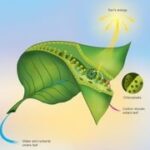The image of a snake consuming its own tail is a powerful and enduring symbol, prevalent in jewelry, tattoos, and various forms of art. This iconic depiction, often referred to as the Ouroboros, is deeply ingrained in our collective consciousness. However, despite its symbolic weight, experts, including herpetologists and snake scientists, clarify that this self-devouring act is primarily a mythological concept, not a common behavior observed in the natural world.
The Mythological Roots: Ouroboros and Hoop Snakes
The concept of a snake biting its own tail is ancient and rich with symbolism. The term “ouroboros” itself originates from Greek, literally translating to “tail-eating.” This symbol, prominent in ancient mythology, embodies ideas of infinity, eternity, cyclicality, rebirth, and the perpetual cycle of life and death. The ouroboros has been adopted and reinterpreted across diverse cultures and eras, from Ancient Egypt and Greece to Norse mythology, each imbuing it with their own cultural nuances and meanings.
In North American folklore, a similar myth exists in the form of the “hoop snake.” This legend describes a snake that bites its tail to form a hoop, then rolls like a wheel to pursue prey or intimidate threats. These myths highlight the enduring fascination and sometimes fear associated with snakes throughout human history.
“Snakes really seem to have a lot of superstitions associated with them,” notes Matt Goode, an assistant research scientist at the University of Arizona School of Natural Resources and the Environment. “They’re so different than we are.” This ‘otherness’ likely contributes to the myths and misinterpretations surrounding snake behavior.
Rare Cases: Trauma, Mistake, or Distress?
While the ouroboros is a potent symbol, its literal manifestation in snake behavior is exceedingly rare. The term has, however, found its way into scientific literature, notably with the African armadillo girdled lizard, genus Ouroborus cataphractus. These lizards coil into a ball, sometimes biting their tails for protection, resembling the ouroboros symbol, though not actually consuming themselves. Despite this naming, concrete scientific evidence of snakes intentionally biting and eating their own tails is scant.
There have been isolated, documented instances of snakes biting their own tails, primarily in captivity. A well-known case involved an Albino Western Hognose snake in the UK in 2014, filmed biting its own tail. However, these events are not typical snake behavior in their natural habitats and are not a concern for scientists studying snakes in the wild.
Bryan Maritz, a senior lecturer at the Department of Biodiversity & Conservation Biology at the University of the Western Cape, explains a more disturbing reality behind some observed “self-biting” incidents. “What people see a lot are videos of snakes biting themselves on the body. And the terrible news of all of this is that it’s often a snake that has been hit by a car or something like that,” Maritz states. “When snakes are in excruciating pain, they just lunge out and they bite. If they’re really in trauma, you sometimes see them biting their bodies, and it’s really quite horrible to watch.” In these tragic scenarios, self-biting is a response to extreme trauma and pain, not intentional self-consumption.
Possible Explanations for Self-Biting Behavior
Beyond trauma, scientists propose other potential reasons for the rare instances of snakes biting themselves. One theory is mistaken identity, driven by hunger or confusion, particularly during feeding.
“Snakes aren’t brilliant, right? Then you might have a snake that’s eating another snake. And then it accidentally just starts swallowing what it thinks is the other snake and it could be its tail,” Goode suggests. “I could see that possibly happening just because they have such a strong feeding response.” This is more plausible in situations where snakes are consuming other snakes, a behavior seen in certain species known for ophiophagy.
Some snakes, like King Cobras, are known to eat other snakes, even venomous ones, and occasionally, even members of their own species. “King cobras in India are one of those,” Goode points out. “They will sometimes eat an individual of their own species.” In such cases of intense feeding responses and potential confusion, accidental self-ingestion, while rare, becomes a possibility.
In conclusion, while the image of snakes eating themselves is a potent symbol deeply rooted in mythology, actual self-consumption is not a typical or well-documented behavior in snakes. Reported incidents are usually linked to captive environments, trauma, or mistaken predatory responses, rather than intentional self-destruction. The ouroboros remains a powerful symbol, but it is essential to distinguish between myth and the realities of snake behavior in the natural world.
